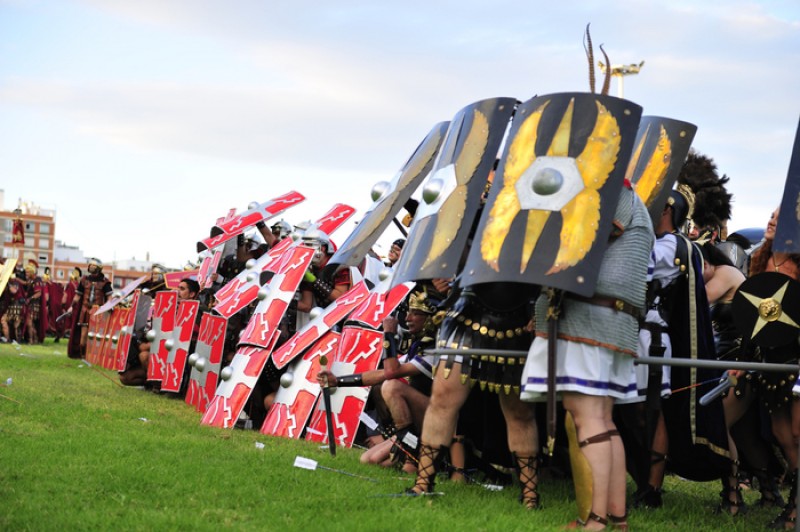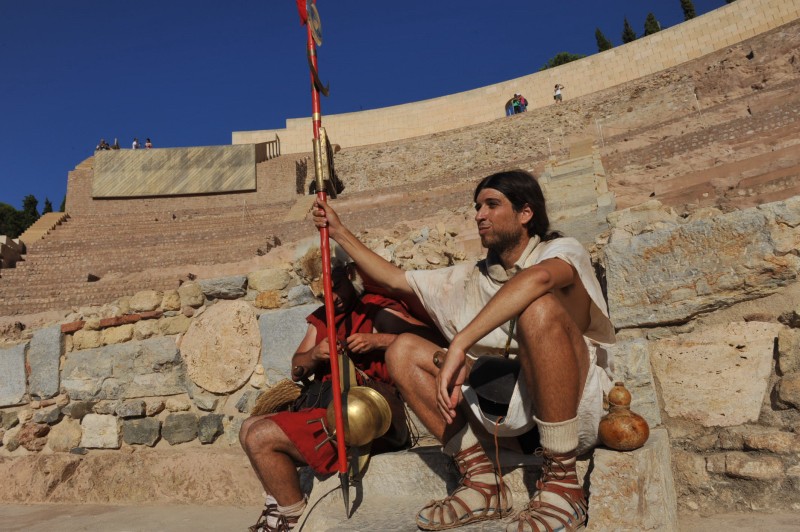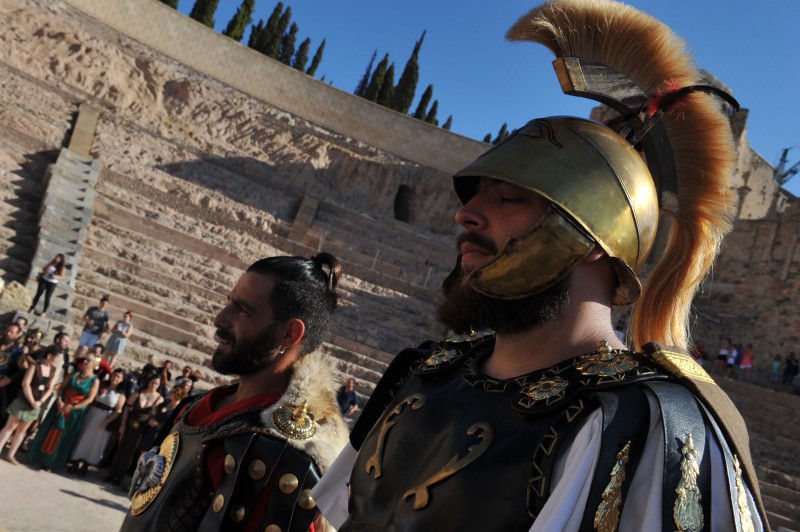

Guidelines for submitting articles to Las Terrazas Golf Resort Today
Hello, and thank you for choosing El Valle Today.com to publicise your organisation’s info or event.
Las Terrazas Golf Resort Today is a website set up by Murcia Today specifically for residents of the urbanisation in Southwest Murcia, providing news and information on what’s happening in the local area, which is the largest English-speaking expat area in the Region of Murcia.
When submitting text to be included on Las Terrazas Golf Resort Today, please abide by the following guidelines so we can upload your article as swiftly as possible:
Send an email to editor@spaintodayonline.com or contact@murciatoday.com
Attach the information in a Word Document or Google Doc
Include all relevant points, including:
Who is the organisation running the event?
Where is it happening?
When?
How much does it cost?
Is it necessary to book beforehand, or can people just show up on the day?
…but try not to exceed 300 words
Also attach a photo to illustrate your article, no more than 100kb

The Roman city of Carthago Nova, forerunner of Cartagena
A city of up to 17,000 people lived off the wealth created by 40,000 mining slaves

“If, soldiers, you imagine that I have brought you here merely to attack a city, you have given more thought to your task than to its advantages: yes, it is true, you will attack the walls of just one city, but with this city you will conquer all of Hispania”.
These are the words, according to the Roman historian Livy, with which General Scipio Africanus addressed his troops before the successful assault on the Carthaginian city of Qart Hadasht in 209 BC, following which the city would be re-named Carthago Nova.
Scipio may have been “bigging it up a bit” to get the best out of his troops, but Carthago Nova grew to be one of the most important cities in Roman Hispania, and 2,200 years later, with the name having evolved into “Cartagena”, the remains of the Roman city are one of its main tourist attractions. Tens of thousands of visitors are drawn to the monumental buildings such as the Roman Theatre and those in the Forum district, but rather than focussing on individual buildings this article is an overview of what kept the city moving and how it sustained such a large population two millennia ago.
Introduction: Qart Hadasht and Carthago Nova
Nowadays the Roman heritage of Cartagena is easily taken for granted to the extent that the Town Hall is applying for the city to be awarded World Heritage Site status by Unesco, but it is actually only over the last 30 or 40 years that the remains of monumental buildings in what was known 2,000 years ago as Carthago Nova have been excavated.
Understandably much attention has been made to the most important public buildings erected and used by the Romans – the Roman Theatre, now the most visited museum in the Region of Murcia, the Roman Forum district on the Molinete hill, the amphitheatre (as yet largely unexcavated), the Decumanus, the Augusteum, the Casa de la Fortuna and many more. But little can be stated for certain about very basic questions regarding Carthago Nova, such as how many people lived here and what made the local economy tick, although historians can arrange the pieces of the jigsaw in order to make some fairly reliable estimates.
The city was conquered by Scipio in 209 BC, just 18 years after the Carthaginians led by Hasdrubal had founded their own city of Qart Hadasht, and it is quite clear that the prime attraction of the location was its strategic value. It has to be remembered that at that time the settlement stood on a small isthmus of land as the area to the north was a large lagoon connected to the Mediterranean by a narrow channel which flowed around the western end: the isthmus was connected to the mainland only by a thin strip of land to the east.
Not only was Carthago Nova served by the large natural harbour we see today, then, it was also endowed with the natural defences provided by five hills on the isthmus, and this made it attractive both to the Carthaginians and to the Romans as a potential stronghold for commerce and trade in the Mediterranean. There are plans to excavate the Roman port itself, part of which was found alongside Calle Mayor in 2016, and there is little doubt that this port was the original “raison d’être” of the cities of Qart Hadasht and Carthago Nova.

How big was Carthago Nova?
Prime among the many fundamental questions regarding the Roman city which remain unanswered is how many people lived there. The centuries of neglect, pillage and re-use of building stone have made it impossible to compile a complete map of the city and it goes without saying that no census records have survived, if indeed they were ever compiled.
But deductions can be made by comparing Carthago Nova to other cities, principally that of Tarraco (now Tarragona) in Catalunya. Both were the capitals of Roman provinces and evidence suggests that they enjoyed more or less equal prestige and importance, and it has been established that Tarraco was home to some 30,000 people at its peak.
Carthago Nova, on the other hand, was smaller, at least when it was first conquered by the Romans, and in terms of geographical area some believe it was limited to the shores of the isthmus and occupied between 30 and 35 hectares. As mining activity and wealth intensified in the 1st century AD, when Carthago Nova became a separate colony, different authors concur that the urban area encompassed more land, with estimates reaching between 43 and 52 hectares.
Scholars have established that the average population densities in Roman urban areas was approximately 250 people per hectare, and this then gives us a total of between 7,500 (with an area of 35 hectares) and 13,000 people (52 hectares). However, some argue that being crammed onto the isthmus, the population density of Carthago Nova could have been significantly higher, reaching figures of up to 17,000, almost comparable with Tarraco although the latter occupied 70 hectares.
On top of this, there would have been a significant rural population and other centres nearby, especially in the port of Portus Magnus (now Portmán) and the mining communities of the Sierra Minera.
At this point further clues need to be taken into account. At around the time Jesus Christ was born (between 5 and 1 BC, before the “golden age” of Carthago Nova), the Roman theatre was built, with capacity for approximately 7,000 spectators, and not long afterwards came the amphitheatre with room for between 10,000 and 11,000 people. This suggests that at that time the population of the city was certainly not lower, and was most probably considerably higher than these figures, making the estimate of 17,000 seem more feasible.
This, though, refers to the urban population of Carthago Nova, but the city was sustained by far-reaching economic activity which resulted in the “real” population of the area being far higher, as we shall see below.
The economy and wealth of Carthago Nova
If the location of Carthago Nova was decided upon by the strategically advantageous natural harbour, this alone was not sufficient to support a thriving and prosperous city. After all, a trading port needs commodities to trade, and in the area around Cartagena these were plentiful.
The most important source of economic activity was the minerals in Sierra Minera, where mining infrastructures already existed and were taken over and ruthlessly exploited by the highly disciplined organization of the Roman Empire. At around the time of the birth of Christ the Greek writer Strabo reported that there were 40,000 people (mainly slaves, it has to be assumed) working in the silver mines of Sierra Minera, and this source of prosperity brought more people to the area from around the Empire.
The metals extracted were exported all over the Mediterranean, and at the same time the port of Carthago Nova was a vital means of importing food as there were few substantial cattle or vegetable farming enterprises near the city. On the export side, what is now the Region of Murcia was an important source of esparto grass (used in the weaving of footwear, baskets and countless other items) and salt, but evidence of substantial wine imports suggests that the wine produced in south-eastern Spain was either not to the Romans’ liking or was insufficient in volume!
Another prized product was the fish sauce known as garum, which was produced in Mazarrón and at other locations along the coastline of Murcia and then exported all over the empire along with the cargoes of salt, oil, silver, lead, salted fish and other products. Pliny reported in the first century AD that
“the best garum is obtained from the mackerel found in the fisheries of Carthago Spartaria, and is known as garum sociorum... apart from unguents there is no liquor which is so expensive, on account of its nobility and the places it comes from”.

Water supply and urban life
In order to maintain a growing population, the city of Carthago Nova and the surrounding area faced a problem which remains relevant to the present day: water. Then as now rainfall was sparse and unpredictable and the city contained systems to capture rainwater and store it in cisterns or wells, and at the same time drainage and sewage networks were created.
But although their existence has been postulated, no large Roman infrastructures such as aqueducts have been found and the most widely supported theory is that the previous Carthaginian infrastructures were enough to keep the city supplied.
At the same time, of course, the growth of the city necessarily resulted in the establishment of local traders and craftsmen within Carthago Nova, and there is ample evidence of a variety of activities including tanneries, bread ovens and glass blowing in the district which later became known as the “Morería”, on the south side of the Molinete hill where the Forum district stood.
These observations are little more than approximations to the complex life of a city which was in its prime over two millennia ago, but while visiting the monuments which have been excavated and restored they provide a little background to the glory of the temples and theatres for which Roman architecture is so revered.
For full information in English about the Cartagena municipality CLICK HERE
For full information about places to visit in Cartagena city CLICK HERE
